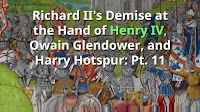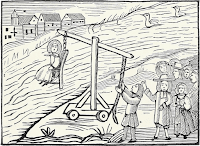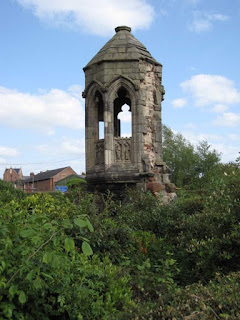Our video below is our interpretation of the events of the Battle of Shrewsbury 1403, and the video is Part 12 of our Shrewsbury History. Please be aware that the images have been selected for illustrative purposes, for the best entertainment value, not accuracy.
This page covers the events in our Part. 11, of the Story of Shrewsbury.
Watch our Part 11 story of Shrewsbury video below. However, if you prefer to read text, scroll on down, because we have added a transcription of our video below:
The Battle of Shrewsbury 1403
The Battle of Shrewsbury was fought at the place named "Battlefield" to the north of the town.Before we talk history. May we suggest a visit to the site?
You can easily explore the site of the brutal battle, fought between King Henry IV, and the rebellious Harry Hotspur, six hundred years ago.
If you want to get a feel for where it took place, watch out at the end of this video, and make a note of the web site, where you can download the directions to the start of the 1.5 mile long public footpath.
Walk the footpath, and as you walk read the downloadable map, which also explains the events of the battle and assumed locations.
Now let's talk about what happened during the Battle of Shrewsbury.
To recap on the last video; Harry Hotspur was the son of a powerful northern lord.
He’d marched south from Northumberland hoping to raise an army to fight the new King.
The rebel Owain Glyndwr had also promised him help from Wales, but Glyndwr’s Welsh army never arrived.
Harry’s army were tired from walking and hadn’t had breakfast.
But, despite the absense of Owain Glyndwr's men, Hotspur fought heroically.
Eventually in desperation, followed by thirty of his best knights, he galloped at full speed into Henry's army, straight toward the place where the royal standard had been set up.
The force of the charge was tremendous.
The royal banner was beaten to the ground; the Prince of Wales was wounded in the face, and many of Henry IV's closest followers were killed.
Hotspur reigned in his panting horse, sheathed his blood stained sword, and raised his visor.
The next moment, as he got a clear view of the battlefield; "a cloth yard arrow, barbed with steel, pierced him between the eyes, and for a moment stood quivering on his head".
"In an instant the young hero of the marches of the north dropped dead."
It is said that Glyndwr had by this time reached Shelton, a few miles away on the opposite side of the Severn.
Climbing an oak to view the scene of the battle, he saw that his allies were being overwhelmed.
Instead of going to their help he retreated into Wales.
It is said that a hundred thousand arrows fell in the first minute of the battle.
Thousands died in the first five minutes.
Text based upon The Story of Shrewsbury, by Richard Graves, Hardwick House, Ellesmere 1993.
Images were used of the Battlefield walk, and, a very useful .pdf formatted Battlefield Walk route map is available at: http://www.shropshiresgreatoutdoors.co.uk/
Images are for entertainment purposes and not necessarily accurate depictions (or even of the correct century!).














